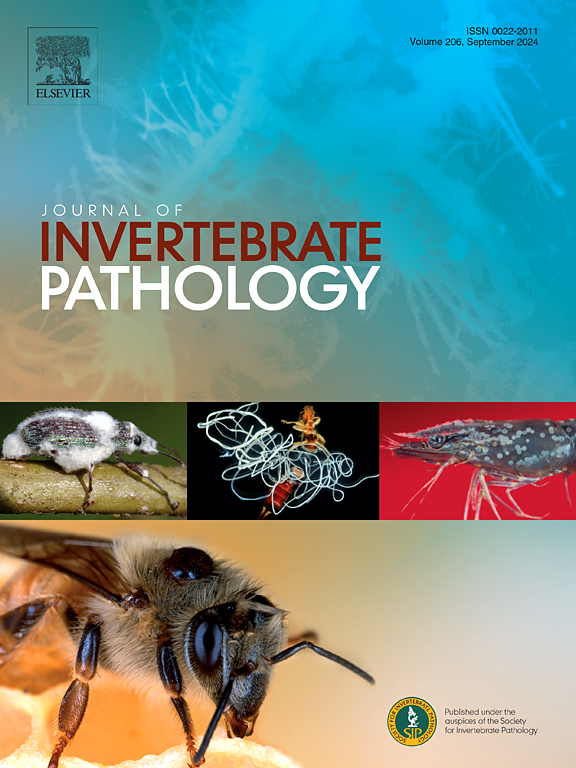Crayfish pet trade as a pathway for the introduction of known and novel viruses
IF 2.4
3区 生物学
Q1 ZOOLOGY
引用次数: 0
Abstract
Expanding international pet trade has emerged as one of the main introduction pathways of aquatic invasive species, with ornamental crayfish species commonly available on the EU and global markets. Besides most frequently studied crayfish pathogens, such as Aphanomyces astaci and white spot syndrome virus (WSSV), ornamental crayfish carry associated microbial communities, which may potentially lead to the emergence of known or even novel diseases following intentional or unintentional release of animals into the wild. This is especially problematic in the case of viruses, which represent an important, yet considerably understudied, group of crayfish pathogens. Here we analyzed viromes of hepatopancreas tissue of four crayfish species acquired in the international pet trade in Europe (Procambarus clarkii, Procambarus alleni, Cherax holthuisi, and Cherax quadricarinatus) using a high throughput sequencing based metagenomic approach. Seven different known viruses were identified, which were previously either directly associated with crayfish (WSSV, Cherax quadricarinatus reovirus, chequa iflavirus, athtab bunya-like virus) or with hosts from subphylum Crustacea or invertebrates associated with freshwater environment (Shahe ispoda virus 5, Dicistroviridae sp.). Additional sequences represented 8 potential novel and divergent RNA viruses, most similar to sequences belonging to members of Picornavirales, Elliovirales, Reovirales, Hepelivirales, Tolivirales and Ghabrivirales orders. We discuss our findings in relation to their phylogenetic relationships, geographical origins, and putative pathogenicity implications. The results highlight the need for further research into the risks related to disease emergence associated with the pet trade.

宠物小龙虾贸易是引入已知和新型病毒的途径
扩大国际宠物贸易已成为水生入侵物种引进的主要途径之一,观赏小龙虾品种在欧盟和全球市场上普遍存在。除了最常被研究的小龙虾病原体,如亚洲隐菌和白斑综合征病毒(WSSV),观赏小龙虾携带相关的微生物群落,这可能会导致在有意或无意将动物释放到野外后出现已知甚至新的疾病。这在病毒的情况下尤其成问题,病毒代表了一组重要的小龙虾病原体,但研究还相当不足。本研究采用基于高通量测序的宏基因组方法,分析了在欧洲国际宠物贸易中获得的四种小龙虾(克氏原螯虾、alleni原螯虾、holthuisi螯虾和quadricarinatus螯虾)肝胰腺组织的病毒组。鉴定出7种不同的已知病毒,这些病毒以前要么与小龙虾直接相关(WSSV, quadricarinatus呼肠孤病毒,chequa iflavvirus, athtab bunya样病毒),要么与来自甲壳亚门或与淡水环境相关的无脊椎动物宿主相关(沙河ispoda病毒5,Dicistroviridae sp.)。其他序列代表了8种潜在的新型和不同的RNA病毒,大多数与Picornavirales、Elliovirales、Reovirales、Hepelivirales、Tolivirales和Ghabrivirales目成员的序列相似。我们讨论了我们的研究结果与他们的系统发育关系,地理起源,和假定的致病性的影响。研究结果表明,有必要进一步研究与宠物贸易有关的疾病发生风险。
本文章由计算机程序翻译,如有差异,请以英文原文为准。
求助全文
约1分钟内获得全文
求助全文
来源期刊
CiteScore
6.10
自引率
5.90%
发文量
94
审稿时长
1 months
期刊介绍:
The Journal of Invertebrate Pathology presents original research articles and notes on the induction and pathogenesis of diseases of invertebrates, including the suppression of diseases in beneficial species, and the use of diseases in controlling undesirable species. In addition, the journal publishes the results of physiological, morphological, genetic, immunological and ecological studies as related to the etiologic agents of diseases of invertebrates.
The Journal of Invertebrate Pathology is the adopted journal of the Society for Invertebrate Pathology, and is available to SIP members at a special reduced price.

 求助内容:
求助内容: 应助结果提醒方式:
应助结果提醒方式:


